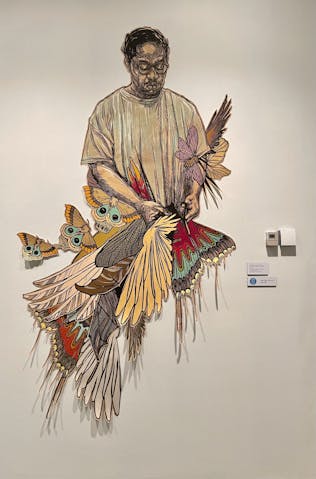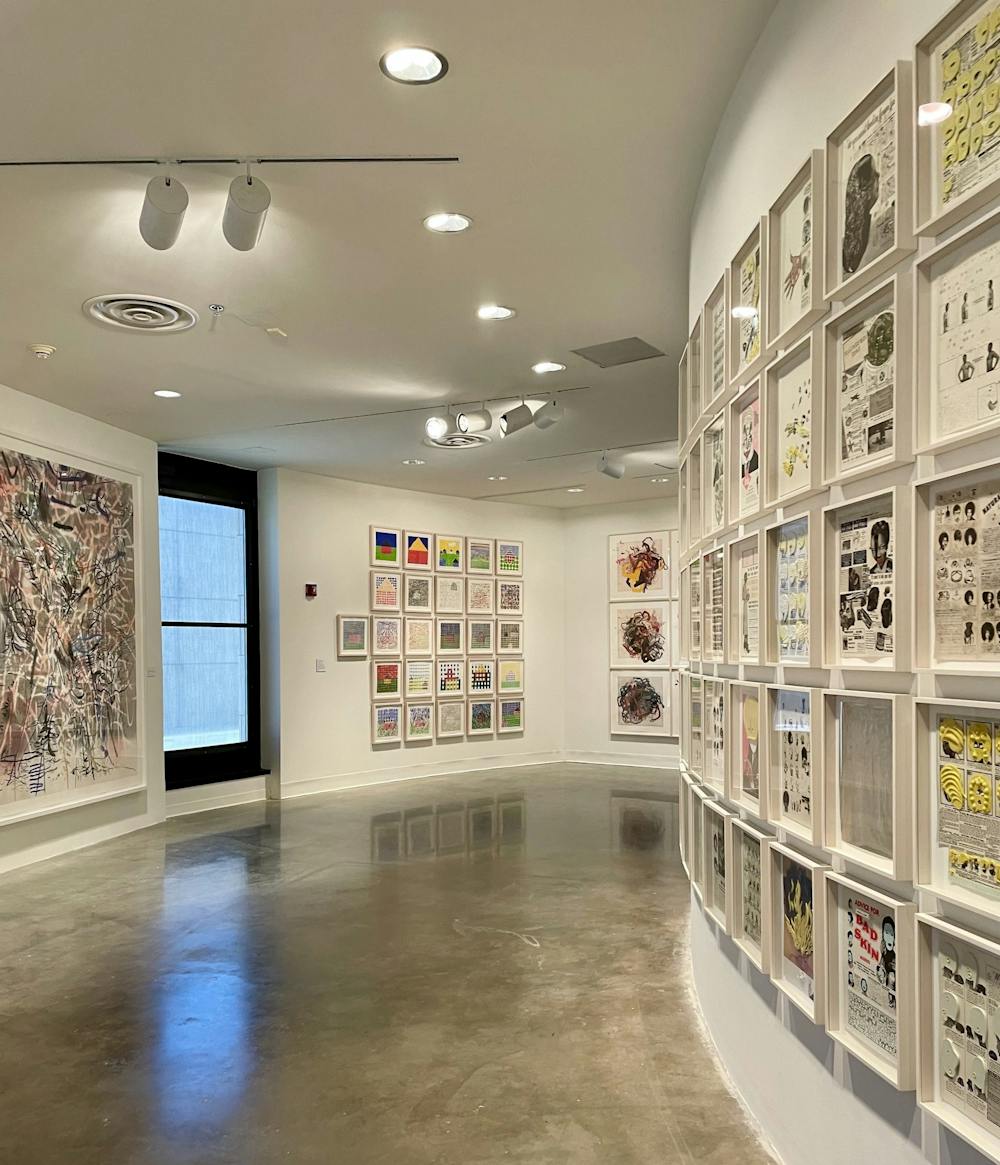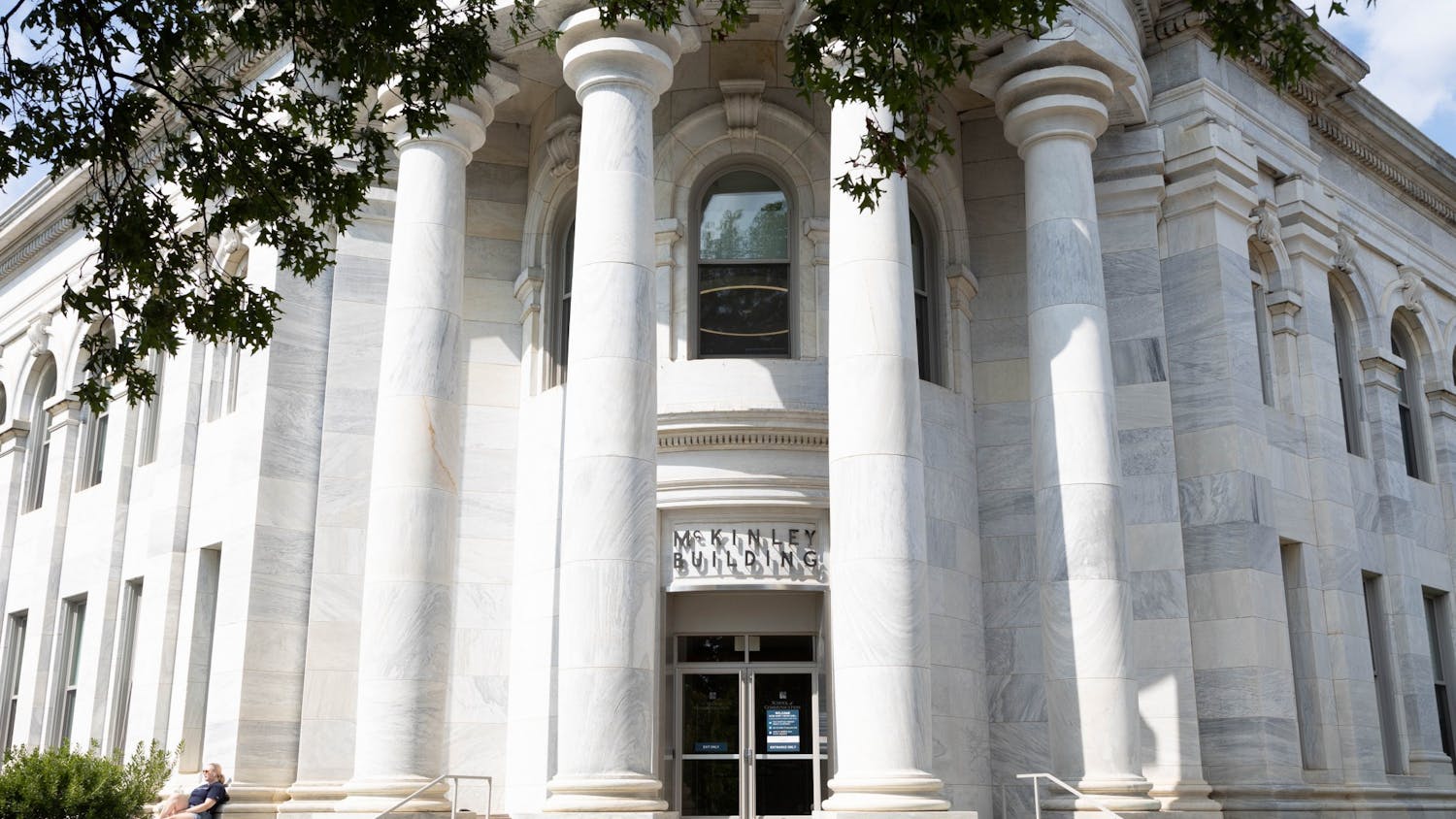Collaging is often seen as a mere hobby when compared to the “fine art” of oil paintings and pieces of grandeur, but the National Museum of Women in the Arts debunks this misconception through “Positive Fragmentation,” an exhibit on display at American University’s Katzen Arts Center.
Displaying over 100 works from 21 different women and non-binary artists, “Positive Fragmentation” seeks to use the deconstruction of images and art as a vehicle to dismantle systems of oppression and the audience’s understanding of social issues.
This exhibit draws from the private collection of Jordan Schitzer and his family, who have one of the largest collections of prints and series of identical works in the country. Virginia Treanor, the associate curator of the NMWA, was tasked with figuring out how to use this large collection of work to focus specifically on women and non-binary artists.
“I was going through hundreds of images in the collection,” Treanor said. “And as I was going through the images it struck me how so many artists were using fragmentation in some aspect in their work. So that led me to think about fragmentation and the role of it in art.”
Treanor was then led to an essay by Lucy Lippard, a prominent art critic and feminist activist, titled “Making Something From Nothing (Toward a Definition of Women’s Hobby Art).” In this essay, Lippard discusses the cultural implications of collaging or “hobby art.” Creating art from household objects, such as newspaper clippings and other trinkets as opposed to paints and fine materials, has historically acted as an indication of class and a divide between women from the fine art world. Lippard then coined the term “Positive Fragmentation” as a means to integrate and establish this new medium in the art sphere.
“She was talking about collage aesthetics, but really in a broader sense of fragmenting something whether it’s form, color, body, text or even an idea in order to put it back together to make us understand it differently,” Treanor said.
“Positive Fragmentation” not only forces the audience to view issues from a different perspective but also immerses viewers in the perspectives of the artists themselves by placing phone numbers throughout the exhibition that the audience can call. Each number corresponds to an audio recording of the artists talking about their piece and process.
“I think that any time you can hear an artist talk about their own work, that’s the best,” Treanor said. “As a curator I can give you an idea of what the artist was thinking or attempting, or situate it within the larger context of the exhibit, but hearing the artist talk about her work as if she’s standing right next to you is a great way to experience it.”
One way this experience takes hold is through the artist named Swoon, otherwise known as Caledonia Curry, who describes the backstory behind her piece titled “Yaya.” Yaya is the nickname of James Hugh, a friend of the artist, whom she met when he was 50 and serving a life sentence for a crime he committed as a minor. Through a restorative justice program, he was able to be freed and is now a traveling artist and activist who has worked to change laws surrounding jail sentences for minors.

By shedding light on a collection of personal and collective experiences, Swoon and other artists not only force the audience to think critically about social justice issues, but also humanize and demystify the concepts that inspire the artwork.
“This exhibit makes you think a lot about art’s power to communicate things and make you see issues in a different light,” Treanor said. “Whether it’s about the environment, role of women or social justice, it all took on more resonance during these past few years.”
The American University Museum is open from 11 a.m.- 4 p.m. Friday through Sunday. The NMWA exhibit will be available until May 29. All visitors must show AU student ID or proof of vaccination upon entry to the museum.





